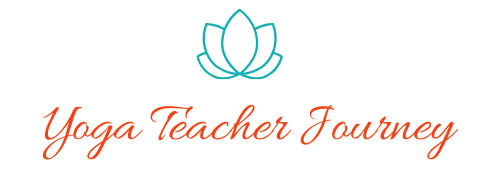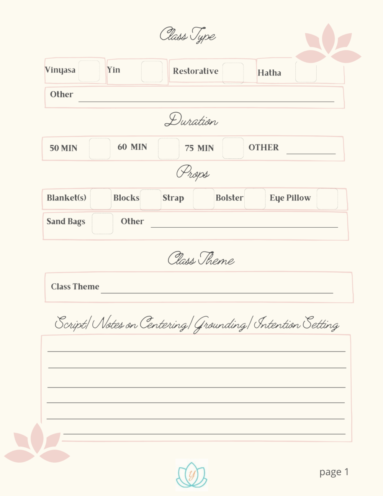Have you ever thought of combining your passion of yoga with another passion? I teach On the Mat, Yoga for Equestrians classes and workshops which combines my passions of yoga and horseback riding.
It wasn’t very long into my early days of practicing that I saw a lot of parallels between yoga and riding.
I’ve been riding most of my life, since I was seven years old. When I was younger did a bit of competing, in and out of the ring in horsemanship, pleasure, trail classes, and my favorite – competitive trail rides. On the trail, competing or not, was another opportunity to combine my passions of being in nature and riding horses.
My love of nature began at a young age as well, spending many hours playing at a nearby stream, catching crayfish, seeing birds, fish, frogs, snakes, and insects living in their natural habitat. I realized there was so much more to this world than a neighborhood of arranged houses lined with concrete sidewalks and asphalt driveways.
It was only natural then that I fell in love with trail riding. On my horse, I could go deep into the woods, with the natural, rhythmic movement of my horse beneath me. As a teenager, I spent my summers riding bareback on the trails along the Patapsco River in Maryland.
I’ve now had the good fortune to have trail ridden all over Maryland, Virginia, and Pennsylvania, but these days I mainly trail ride from my home which is adjacent to a 9,000 plus acre watershed property. Sometimes, while riding the trails, or just hanging out at my farmette, I practice yoga on my horse, Sienna.
“The horse embodies the wings a person feels inside.” ~ Unknown
Continue reading to learn why no matter what discipline of riding you enjoy, yoga can help you and your horse to become a calmer, more confident team.
What are the parallels between riding and yoga?
- Both integrate breathing into the movements of your body and in riding, the horses body
- Both use deep diaphragmatic breathing to allow us to enter into a heightened state of awareness
- The foundation of both riding and Asana (physical postures of yoga) is balance, which is achieved through proper physical alignment
- Focus and mental attitude are equally as important in both activities, resulting in the union of mind, body, and spirit – the definition of yoga (a Sanskrit word meaning “union, to yoke or to unite”)
The benefits of practicing yoga – *on and off the horse are endless – but here are a few:
- Improved mental clarity and awareness
- Increased calmness and inner peace
- Increased balance, strength, and flexibility
- Proper physical alignment and symmetry
- Possible injury prevention
- Achieving union with your horse
*Be mindful of how your horse may react to your movements – start slow and with a handler when practicing asana on horseback.
If you know anything at all about horses, you know they are very in tune with a human’s energy and can immediately sense how you are feeling.
- Horses are prey animals and are very perceptive to danger. So, picking up on shallow, erratic breathing (a state of fight or flight) can be perceived as danger to them.
- Horses are herd animals. When in a herd, a pecking-order is established which helps them feel safe.
- We want to be viewed by the horse as a confident leader, an alpha member of the herd, so he can feel safe and secure.
- For this to happen, equestrians need to feel calm, be in the moment, and exude confidence with their horse.
Breathing the Horse to Quietness
In the well-known book Centered Riding, author Sally Swift says “you can breathe a horse to quietness.” I believe this is true, but first we must learn to breathe ourselves to quietness. This can be done by using breathing techniques or Pranayama in Sanskrit, the fourth limb of Yoga in Patanjali’s eight-limbed path.
Here’s a practical breathing exercise to engage in before riding to help bring you into a state of calm. Just by observing your breath you will become attuned to your internal state of mind and body.
- Take a comfortable seat.
- Close your eyes or take a gentle downward gaze.
- Begin following the path of your breath: in through your nose and out through your nose.
- Take deep, slow, diaphragmatic breaths, filling the belly, ribs, and chest.
- Count each breath to a count of four or five (whichever feels best).
- Match the length of each inhale with the length of each exhale.
- Listen to the sound of your breath.
- Notice the movements of your body with each breath.
- As other thoughts enter your mind, acknowledge them, and then let them drift through your awareness.
- Come back to your breath, using your breath as an anchor.
- Take at lease 6 rounds of full inhales and exhales.
- Return to the natural rhythm of your breath.
Alternate nostril breathing or Anuloma Viloma, is another wonderful Pranayama practice for creating balance in our brain. In yoga philosophy, the right side of the brain is believed to be our masculine side which harnesses the sun (Ha), and the left side is feminine and harnesses the moon (Tha). (Hence the term Hatha yoga.) This breath soothes the nervous system and calms the mind:
Take your peace fingers of your right hand and place them down in your palm (Vishnu Mudra). Use your thumb and ring finger to alternatively close off each nostril as you breathe.
Start by taking a full inhale and exhale through both nostrils.
- Close off the right nostril
- Inhale through left nostril; close off the left
- Exhale through the right nostril
- Inhale through the right nostril; then close off the right
- Exhale through the left nostril
This concludes one full round of breath. Continue for at least six rounds of breath. When finished, allow both hands to rest of your thighs and return to your natural breathing.
Another way to prepare for riding is doing a mental rehearsal of the ride using visualization. In the book, Yoga for Equestrians by Linda Benedik and Veronica Wirth, this visualization is used to bring you into calmness by forming a mental picture of a positive riding experience before you approach your horse.
In this way, you can visualize the whole experience of you and your horse together, from the calm expression on BOTH your faces to the perfect alignment of the two of you moving in harmony together while riding.
Other techniques to channel awareness and encourage relaxation are the use of meditation, mantras, and affirmations.
In her book Yoga for Riders, Cathy Woods says “practicing meditative techniques, even for a short time, helps you gain peace and clarity that will greatly benefit your relationship with your horse.” As a retreat leader, horsewoman, and yoga teacher, Cathy further explains how “there are significant, positive shifts” when she meditates, including being “less stressed and having better focus.”
Try repeating the following words or mantras quietly to yourself before and during your time with your horse.
- Breathe
- Relax
- Calm
- Grace
- Focus
- Release
- Peace
- Yield
Achieving Union with Your Horse
You know by now that the ultimate goal of yoga is to achieve union of mind, body, and spirit, within yourself. So how do we include the horse when achieving union?
If you’ve ever had the experience of feeling this way with your equine partner, you know that it is both a physical and mental union.
When you are connected mentally there is a mutual trust between horse and rider. The horse feels safe, as you, the relaxed, confident, alpha member of the herd guide him. As the rider, you can anticipate what the horse is thinking and how he might react to situations before they arise.
On a physical level it is as if you and your horse are connected, as you naturally balance deep at your core connecting with his core. As you ride, the horse is constantly making shifts in his movements to support the rider upon his spine. Likewise, the rider is adjusting as the horse’s center of gravity is shifting. When you achieve union with your horse it can seem effortless, as you both feel a natural fluid connection.
To achieve this physical union, first visualize your center. You might first think of your center, or core, as your navel center or your abdominal muscles. But your physical center of gravity is located deep in your abdomen, one to two inches below your navel, in front of the thick lumbar vertebrae (Yoga for Equestrians, Benedik & Wirth).
However, achieving this core connection is not the only physical element of riding. Just about every muscle in your body is used in riding.
Lower body muscles are used to deepen your seat and stabilize your body and leg position.
- Adductors (inner thighs) are used to establish leg contact
- Abductors (outer thighs; quadriceps) assist in opening the hips and releasing leg pressure
- Buttocks (gluteus maximus/minimus) assist in opening hips, lengthening, and controlling rotation of legs
Flexibility in all these areas as well as the low back helps to follow the movement of the horse and to encourage the horse to relax.
Upper body muscles used for a proper seat include abdominals, obliques, pectorals, and trapezius.
Linking Asana (postures) with Riding
Understanding how all muscles are used in riding will help you appreciate your physical yoga practice. Certain Asanas will assist you in building strength, flexibility, symmetry, and balance in your body. Practicing yoga on your horse will help to build a better mind body connection between you and your horse.
Here are some beneficial Asanas to practice on the *mat, followed by a few to practice on your horse.
- Half Happy Baby
- Cat/Cow
- Alternate Stretch
- Wide-legged Child’s Pose
- Low Lunge
- Lizard
- Warrior One
- Warrior Two
- Warrior Three
- Extended Triangle
- Extended Side Angle
- Wide-Legged Forward Fold
- Pyramid
- Revolved Side-Angle
- Revolved Triangle
- One-legged Pigeon
- Tree
- Eagle
- Locust
- Camel
- Seated Forward Fold
- Bound Angle
- Half Lord of the Fishes
- Boat
- Bridge
- Happy Baby
- Corpse
*SEE FULL ON THE MAT EQUESTRIAN YOGA SEQUENCE HERE*

On Your Horse*
*Start slow with a handler; be mindful of the horses possible reactions to your movements
- Eagle Arms
- Triangle
- Camel
- Cow Face
- Side Angle
- Seated Twist (option with extended arms)
For more information and illustrations of equestrian yoga on the mat and on the horse see the following resources:
Yoga for Riders, Principles and Postures to Improve your Horsemanship, by Cathy Woods
Whatever passions you have in life, you can probably find a way to make it applicable to yoga and provide instruction to others who share your joint interests. Read How to Plan and Teach Yoga Workshops to learn more.





